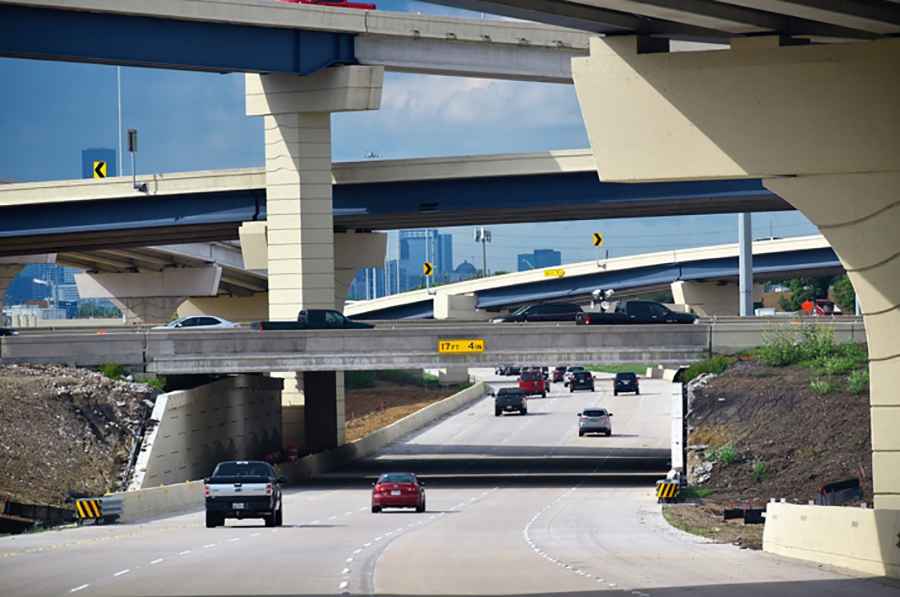Most Dangerous Roads in Texas in 2024
Driving through Texas can be an adventure, but it can also be fraught with danger, especially on some of the state's most treacherous roads. In 2024, certain routes continue to pose significant risks to motorists, with accidents, congestion, and hazardous conditions plaguing their lanes. Among the myriad thoroughfares weaving through the Lone Star State, five roads stand out as particularly perilous, demanding extra caution from drivers traversing their stretches.

1. Interstate 45
Interstate 45 (I-45) is a major highway in the United States, running from Galveston to Dallas, Interstate 45 has long been notorious for its high accident rates. With heavy traffic volumes, abrupt lane changes, and frequent construction zones, this interstate presents a constant challenge to even the most seasoned drivers. Factors such as high speeds, heavy traffic volume, adverse weather conditions, and driver error can all contribute to accidents along this route.
In recent years, efforts have been made to improve safety on I-45, including infrastructure upgrades, enhanced law enforcement presence, and public awareness campaigns. However, accidents can still occur due to various reasons, ranging from distracted driving to mechanical failures.
2. Interstate 10
Stretching across the entire southern border of Texas, Interstate 10 is one of the major interstate highways in the United States. It sees a constant stream of traffic, from commercial trucks to vacationers heading to the Gulf Coast. This bustling highway is plagued by congestion, particularly near major cities like Houston and San Antonio. Combine this with its winding curves and variable speed limits, and it's no wonder I-10 ranks among the most hazardous roads in the state.
3. Interstate 35
As one of the busiest highways in Texas, Interstate 35 connects the major cities of Laredo, San Antonio, Austin, and Dallas. Its high traffic volume, coupled with frequent road construction and narrow lanes, creates a recipe for accidents. Additionally, the mix of local and interstate traffic often leads to abrupt stops and starts, increasing the likelihood of rear-end collisions.
4. U.S. Route 83
Running from the Mexican border to the Oklahoma state line, U.S. Route 83 traverses diverse terrain, from rugged mountains to expansive plains. However, its scenic vistas belie the dangers lurking along its path. Portions of this highway are poorly maintained, with narrow shoulders and inadequate lighting, making nighttime driving especially hazardous. Moreover, the route's remote stretches increase response times in the event of an accident, posing additional risks to motorists.
5. Interstate 20 and feeder Interstate 820
Interstate 20 (I-20) and Interstate 820 (I-820) are both significant highways in the United States. I-20 stretches from west to east, running from near Kent, Texas, to Florence, South Carolina. Along its route, it passes through several major cities, including Dallas and Fort Worth in Texas, Shreveport in Louisiana, and Atlanta in Georgia. I-820 is a loop around the city of Fort Worth, Texas. It forms a partial loop around the city, connecting with I-20 at multiple points. It serves as a bypass route for traffic around the city and is particularly useful for commuters and travelers who want to avoid the downtown area of Fort Worth. It intersects with several other major highways, including I-30 and I-35W, providing crucial connections for regional transportation.
However, this complex network of highways is plagued by heavy traffic congestion and frequent lane closures due to ongoing construction projects. Navigating the interchange between these two interstates requires split-second decision-making, often leading to confusion and accidents among motorists.
Auto Insurance Coverage: A Lifeline on Dangerous Roads
Given the inherent risks associated with driving on Texas's most dangerous roads, having adequate auto insurance coverage is paramount. Comprehensive coverage not only protects drivers financially in the event of an accident but also offers peace of mind knowing that medical expenses, vehicle repairs, and liability claims are all accounted for.
For those who frequently commute on hazardous highways like Interstate 45 or Interstate 10, investing in uninsured/underinsured motorist coverage is especially prudent. This additional protection ensures that drivers are financially safeguarded in the event of a collision with an uninsured or underinsured motorist—a common occurrence on Texas roads.
Moreover, roadside assistance coverage can be a lifesaver when navigating remote stretches of highway prone to breakdowns or accidents. With access to services like towing, fuel delivery, and tire changes, drivers can mitigate the risks associated with unexpected roadside emergencies.
1. Conclusion
While Texas boasts expansive landscapes and picturesque highways, it also harbors some of the most dangerous roads in the country. Motorists must exercise caution when traveling along these roads. By maintaining vigilance behind the wheel and ensuring adequate auto insurance coverage, drivers can mitigate the risks and arrive safely at their destinations.